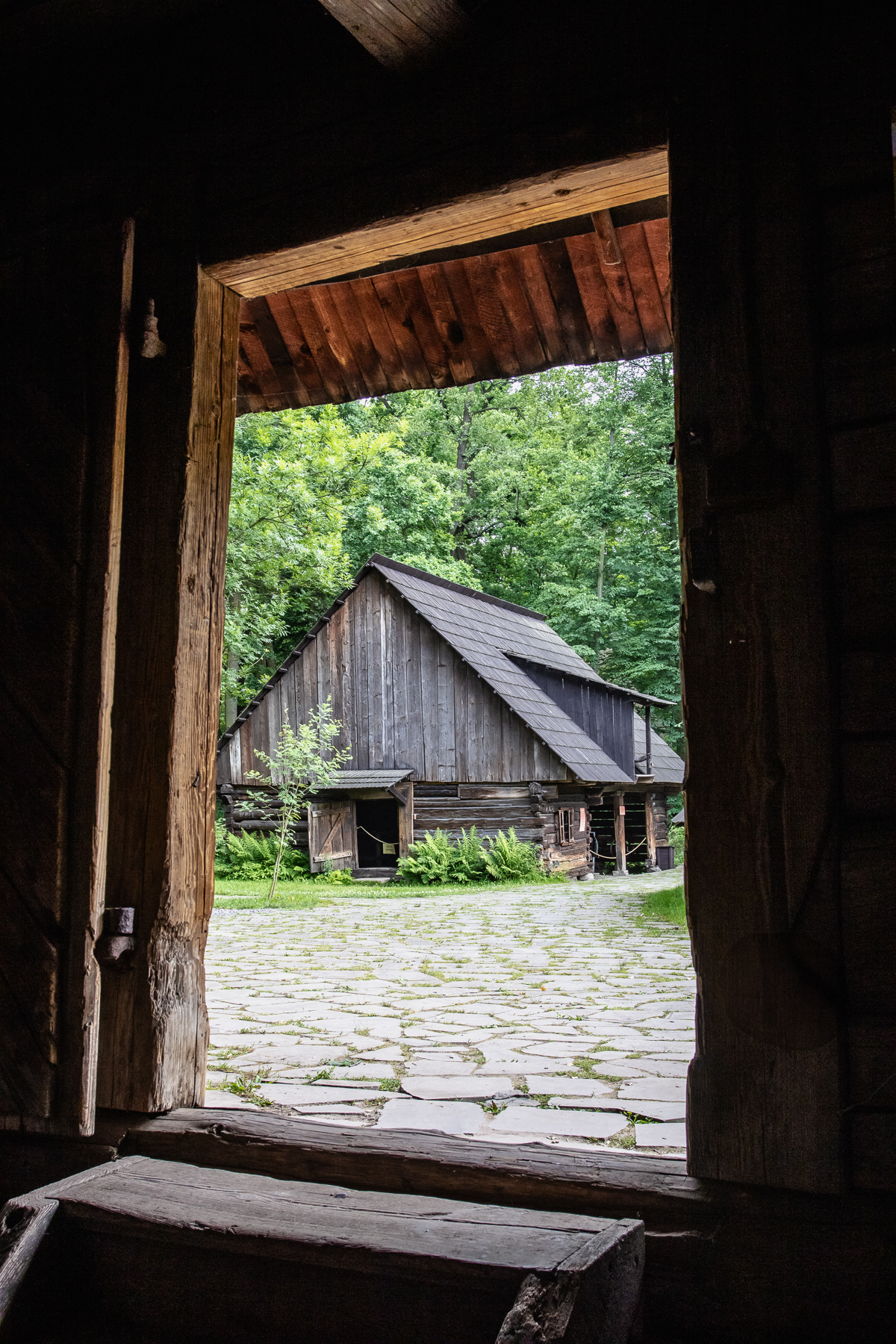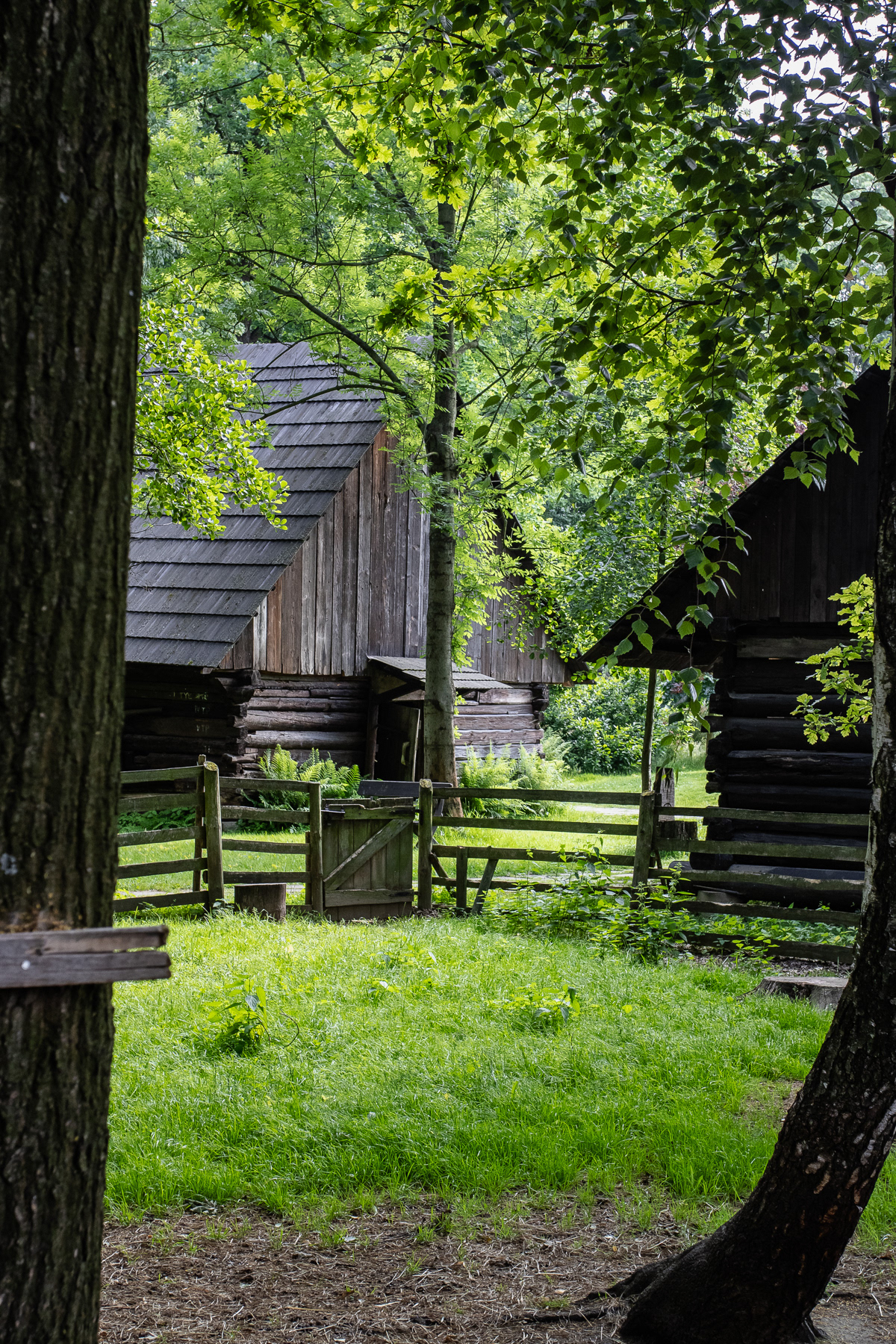Rynek, the main square, of Pszczyna, June 2025
A Silesian small-town (25,000 inh.) often passed by for the bigger neighouring cities of Katowice and Bielsko-Biała, Pszczyna is an unexpected gem in between. It has a picturesque main square (rynek) including a few restaurants with tasty food, and from there one walks easily into its relatively extensive green Castle Park - with the castle itself being more of the countryhouse estate type. Continue into the quieter green zone to the west and one comes across deer and even the wisent (European bison) in a small reserve.
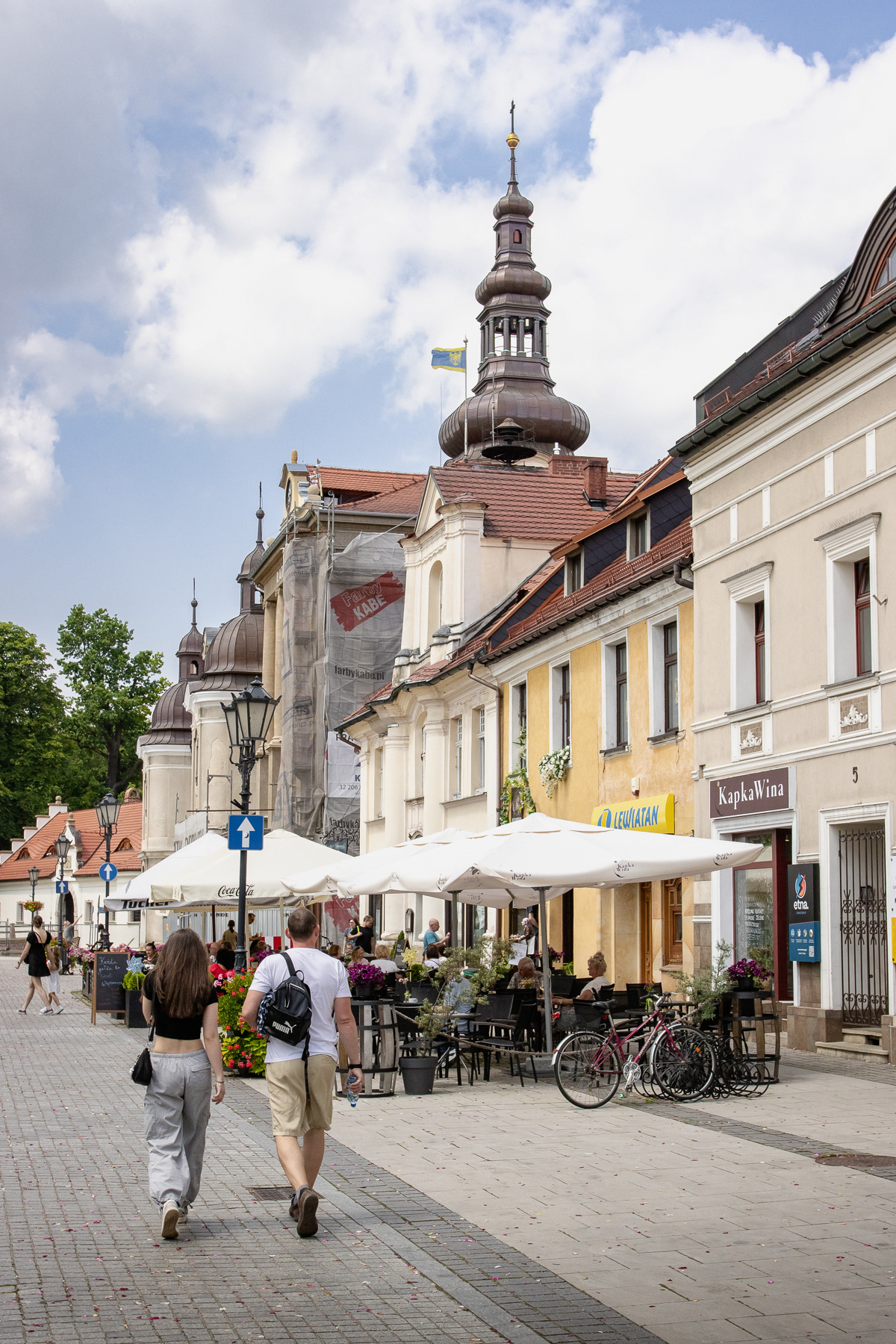
At the main square.
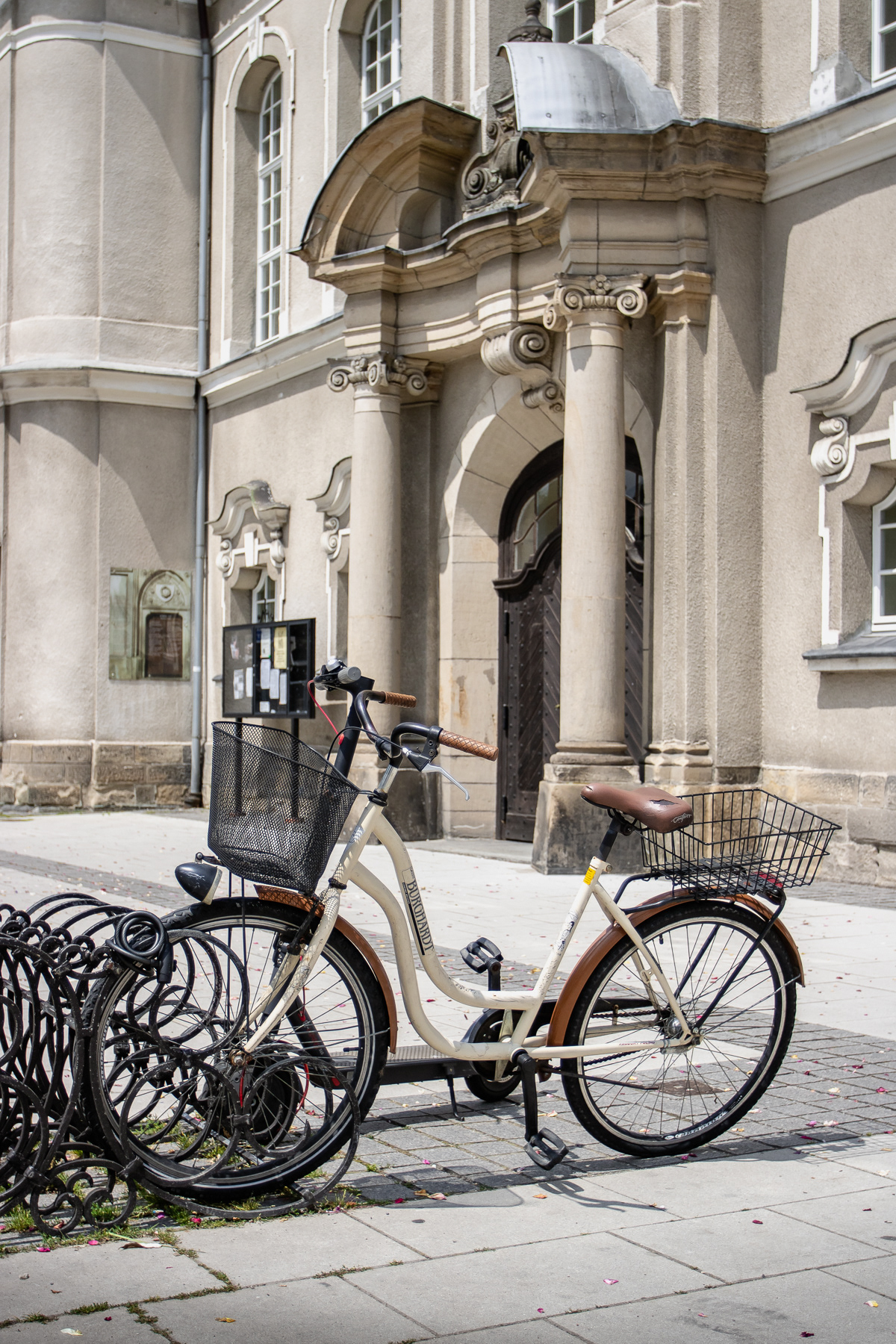
Bicycle in front of the Lutherian church at the main square.
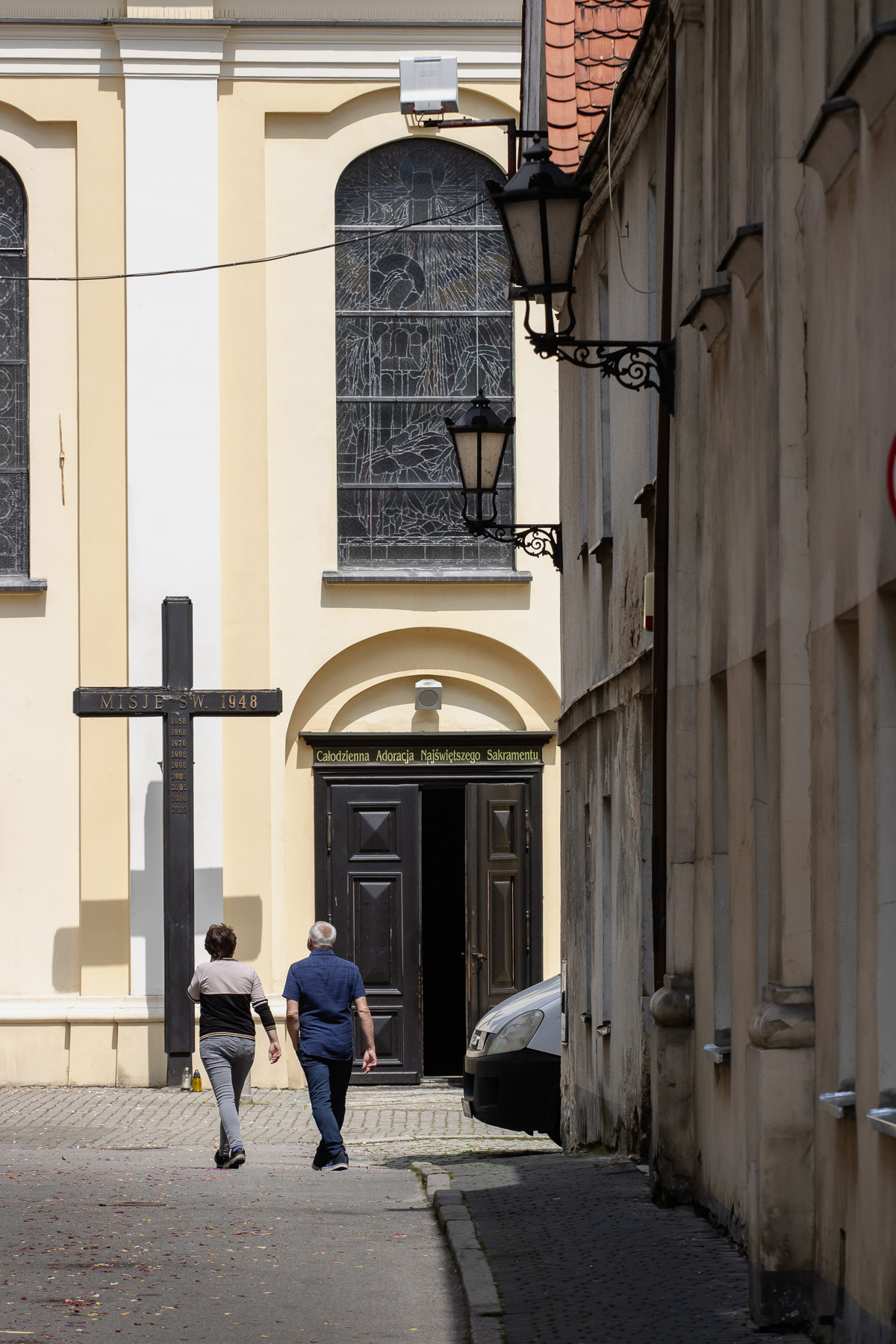
Alley to the catholic church with its dominating bell tower.
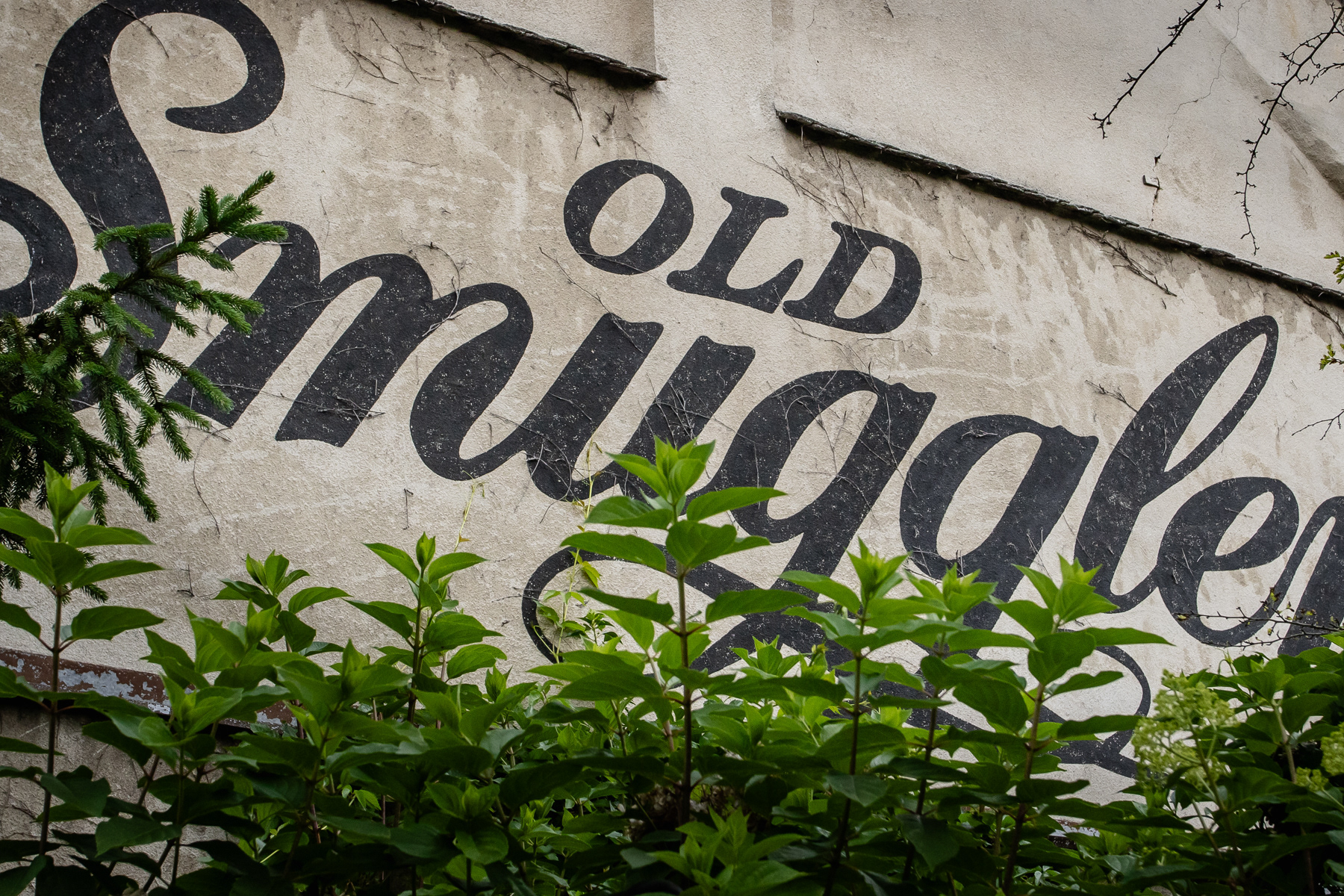
The Old Smuggler.

Wall art a block away from the main square.

Wall art at a corner of the main square.
Main square of Pszczyna, with the city hall (Ratusz) and the old well.

To "force" the Silesian to feel Polish, the Polish rulers put a lot of Piast signs in Silesia - which was the first royal dynasty of Poland. These un-Silesian "Piast" elements can be found in many Silesian towns.
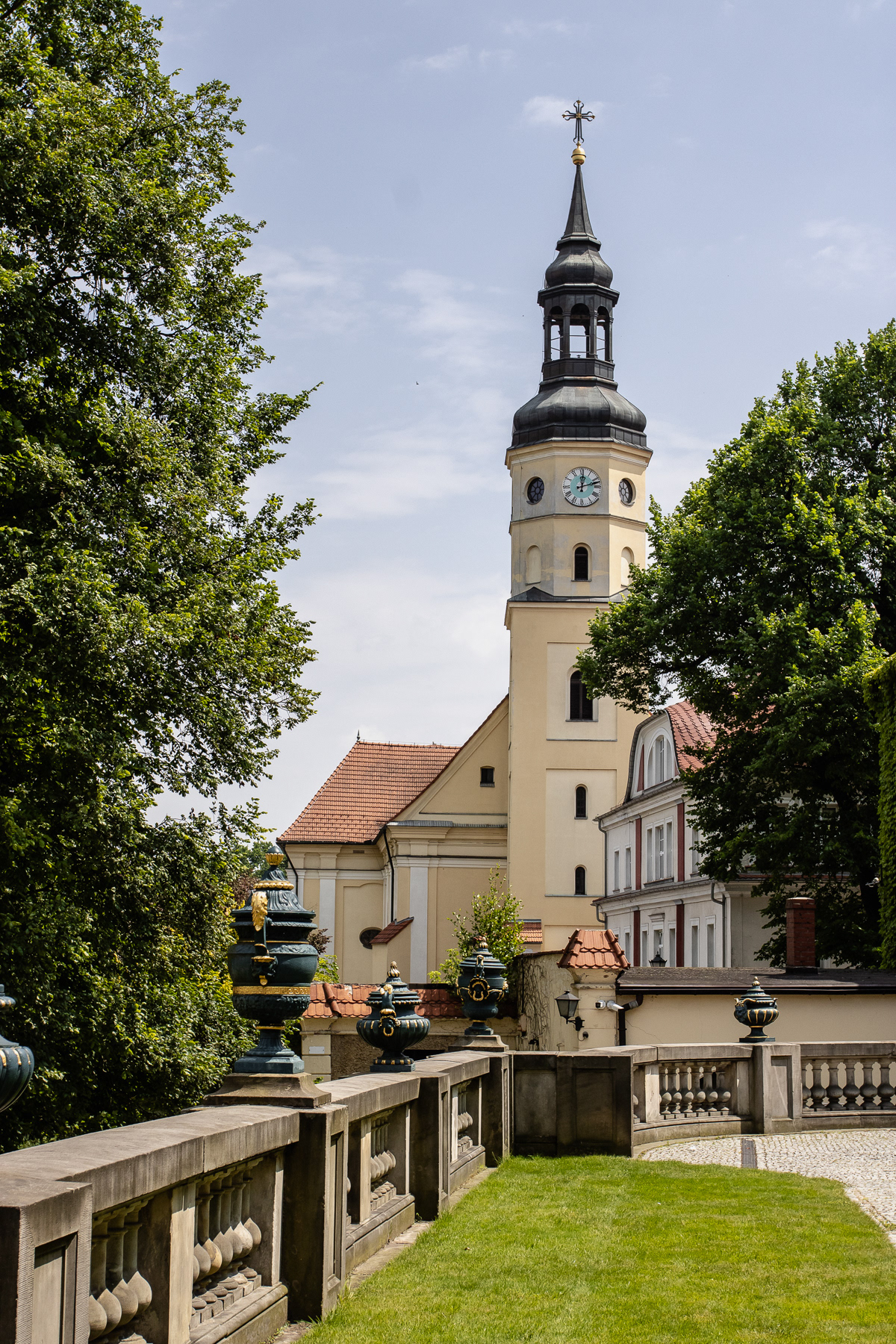
The Kościół Wszystkich Świętych w Pszczynie, the main catholic church of the town.
Pszczyna Castle (Zamek w Pszczynie) and the castle gardens
Dating back to the 13th century and changed many times in the centuries after, Pszczyna Castle is by fans seen as one of the most beautiful residential castle of Poland. Historically it was the residence of Silesian and later Piast dukes. From the mid-1700s it became German - as was most of Silesia. First the Promnitz clan claimed it, then the Von Pless family took over. Only after the death of the last Prince of Pless, the state took control in 1936. But as we know, even that was short-lived as the Nazi-German army broke to the Polish army Silesian defence lines near Pszczyna in 1939 and took the town and half of the rest of Poland. After the war the castle served as a Soviet military hospital but was soon turned over to the municipality - who turned it into a museum it is still today.
Front side of Pszczyna Castle
Backside of Pszczyna Castle
Park Zamkowy
The Castle Park (Park Zamkowy) is part of the former castle gardens and really developped rather late in the second half of the 18th century. The park is a great spot to relax, with hidden corners, exciting paths, cute lamppost flanked promenade and cycle lanes, a tea house, a former ice storage and lots more. It is simply a joy to discover the about 50 hectares of it.
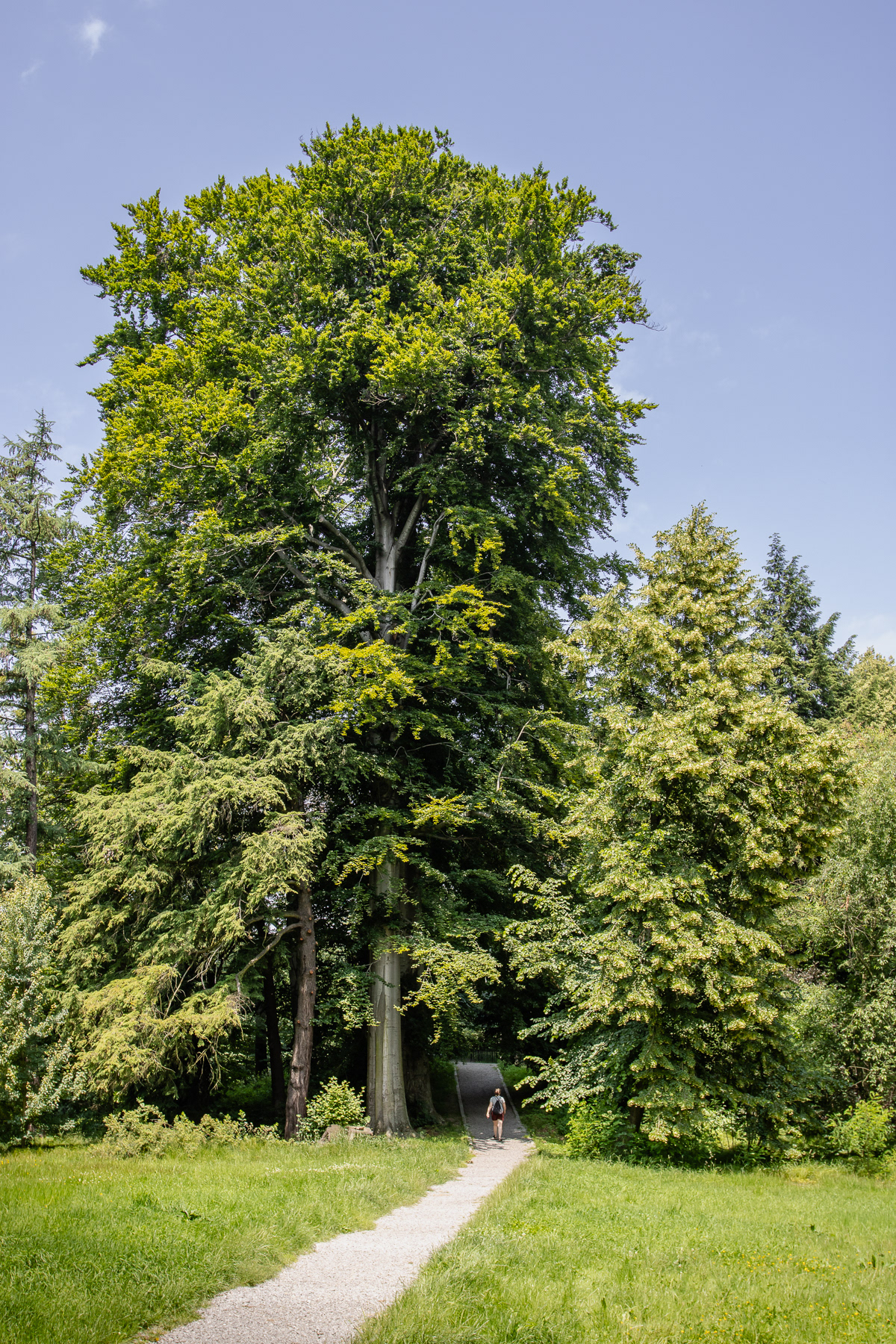
Notice the lady next to the giant tree.
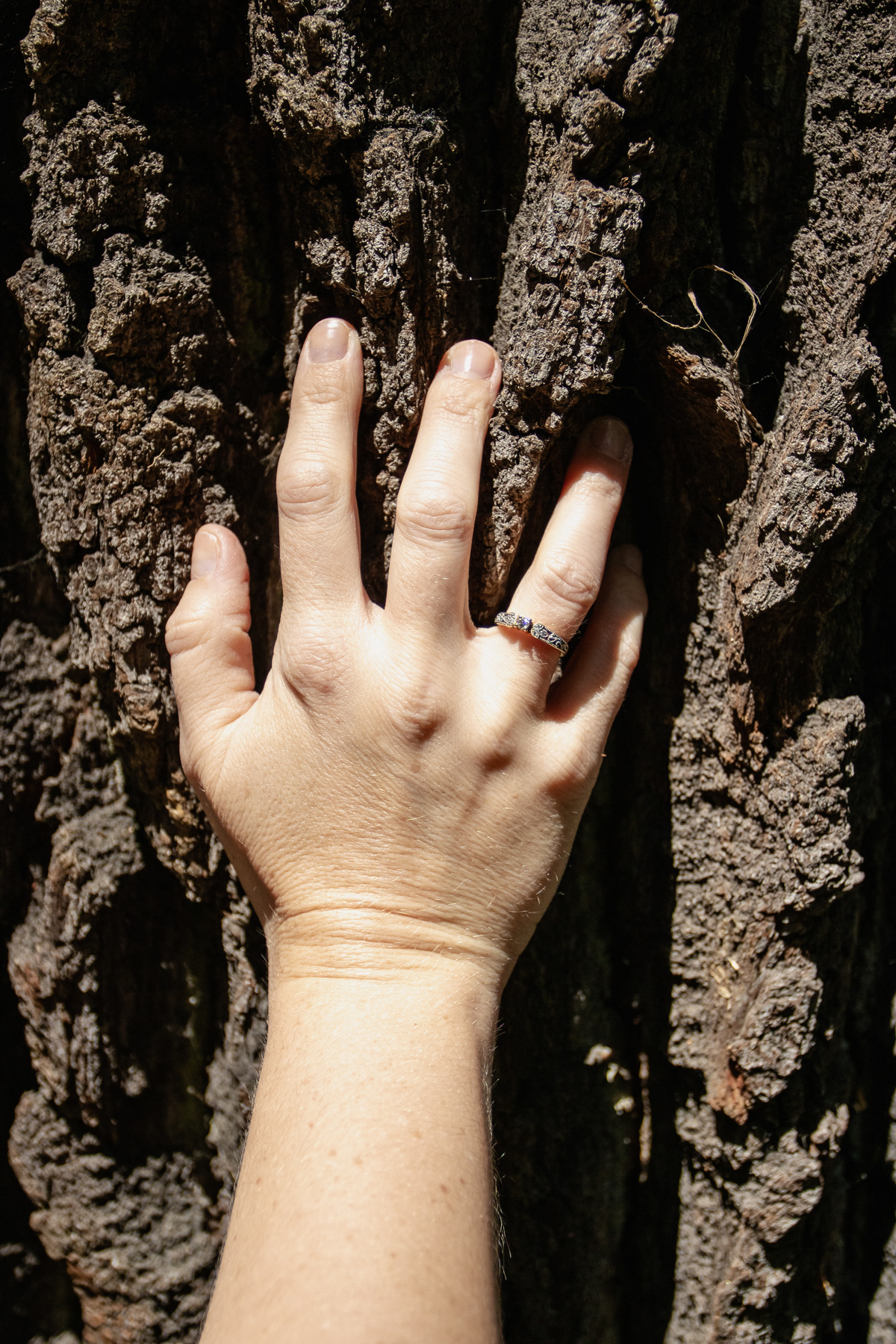
Thick bark.
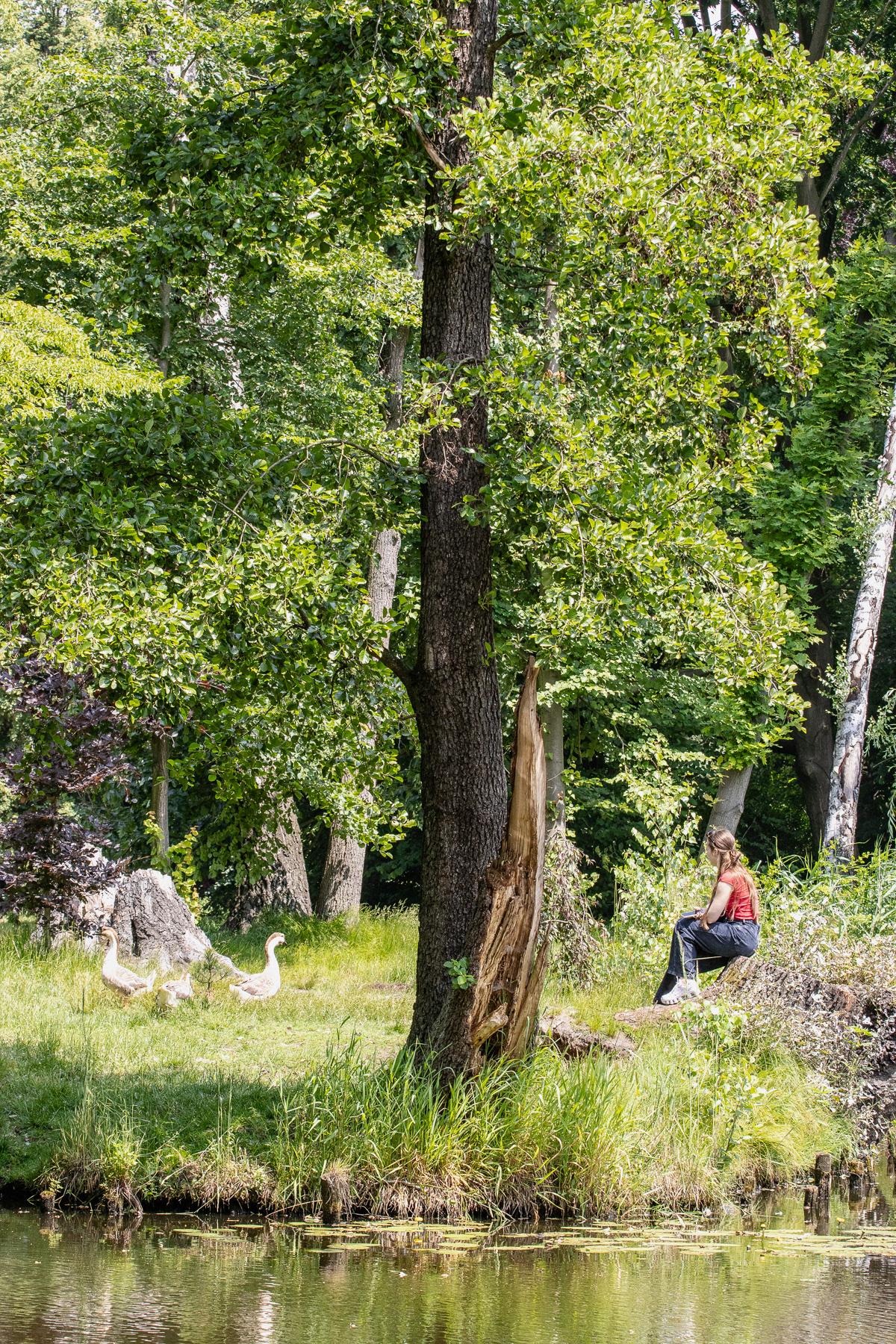
A fairytale setting.
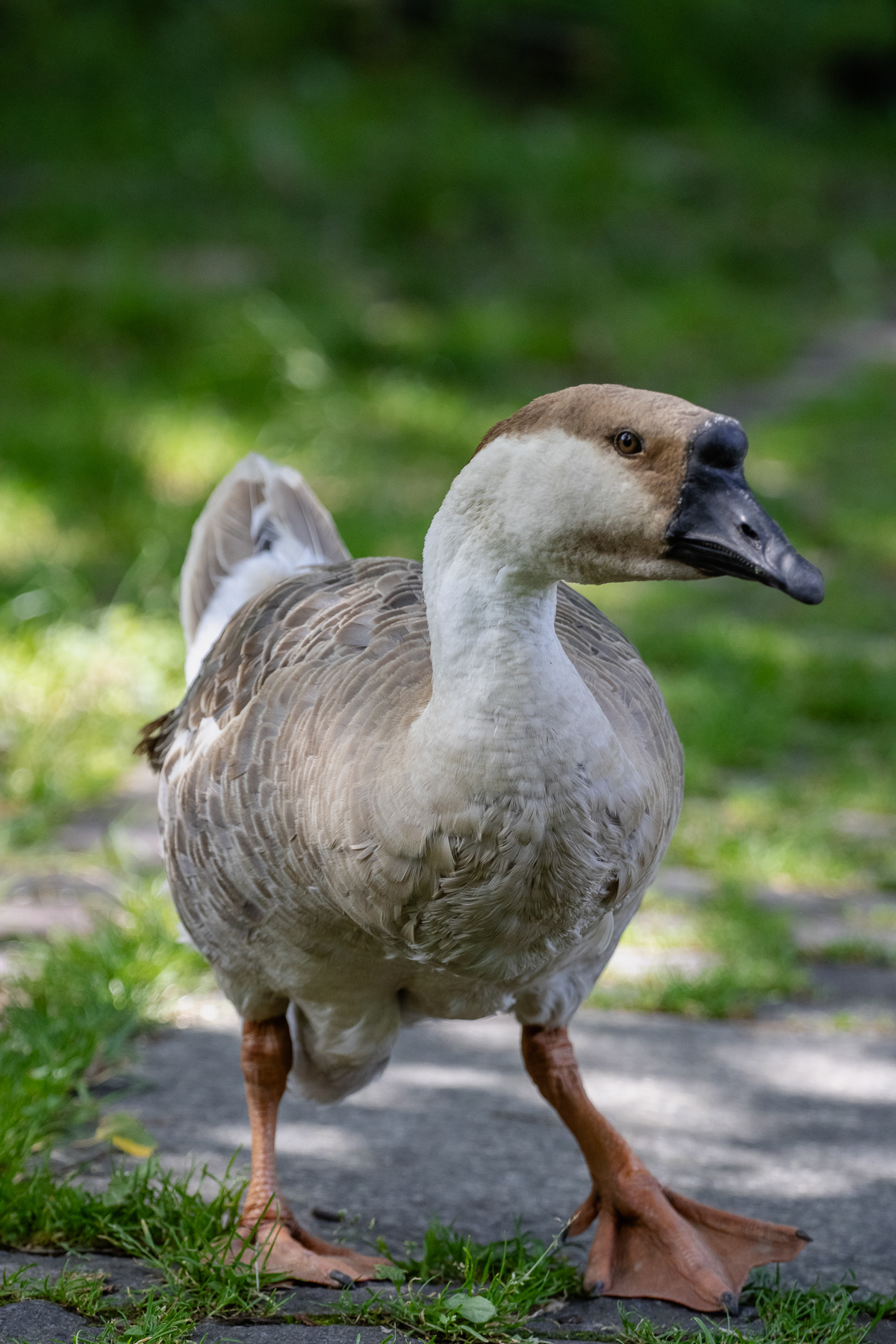
A goose in the park.

The tea house.
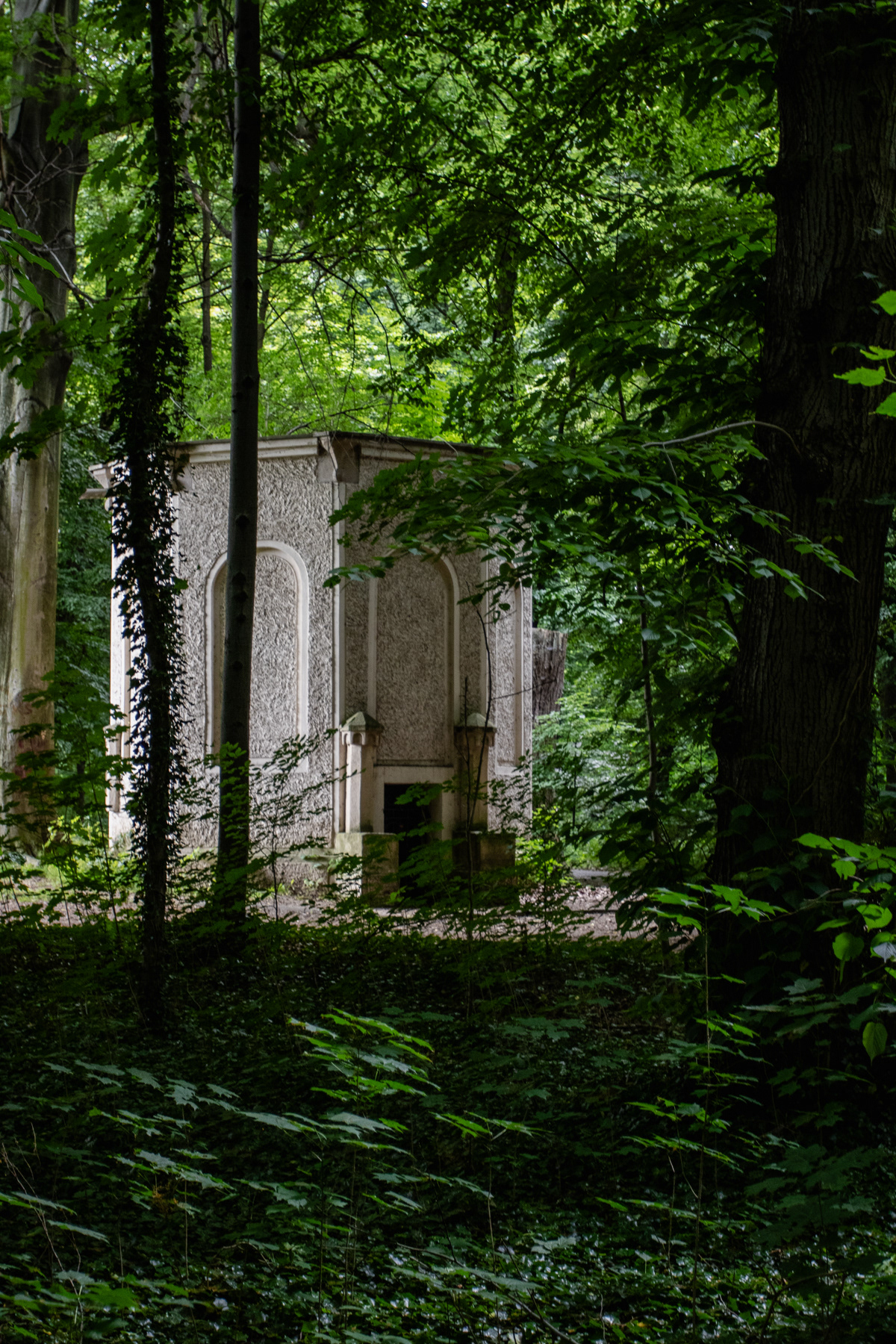
The former ice storage. There used to be a plastform on top for the castle band to play.
The outdoor tables offer a great setting with a view of the castle on the other side of the pond.
Park Zwierzyniec
Adjacent to Castle Park, one can keep on wandering into the lushy green in Park Zwierzyniec. In total, the former castle gardens are 160 hectares, and a large chunk of that is the Zwierzyniec green zone. It includes a 10 hectares reserve for the wisent - which still lives in the wild in the far east of Poland. As the wisent are often staying a bit further away from the viewpoints for paying visitors at the edge of their enclosures, the reserve also offers deer on close range.
At the eastern edge of Park Zwierzyniec
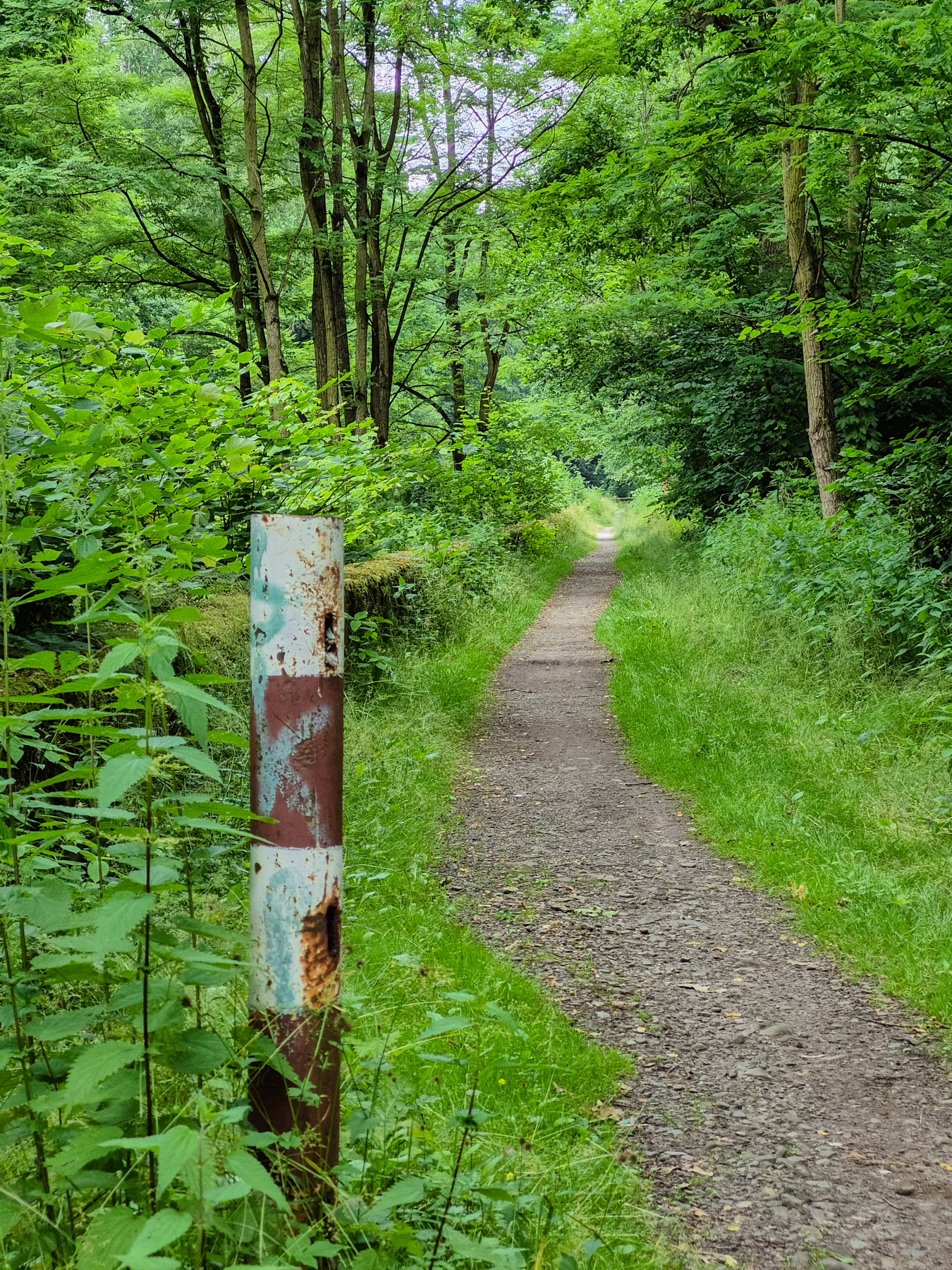
A trail that follows the Pszczynka canal.
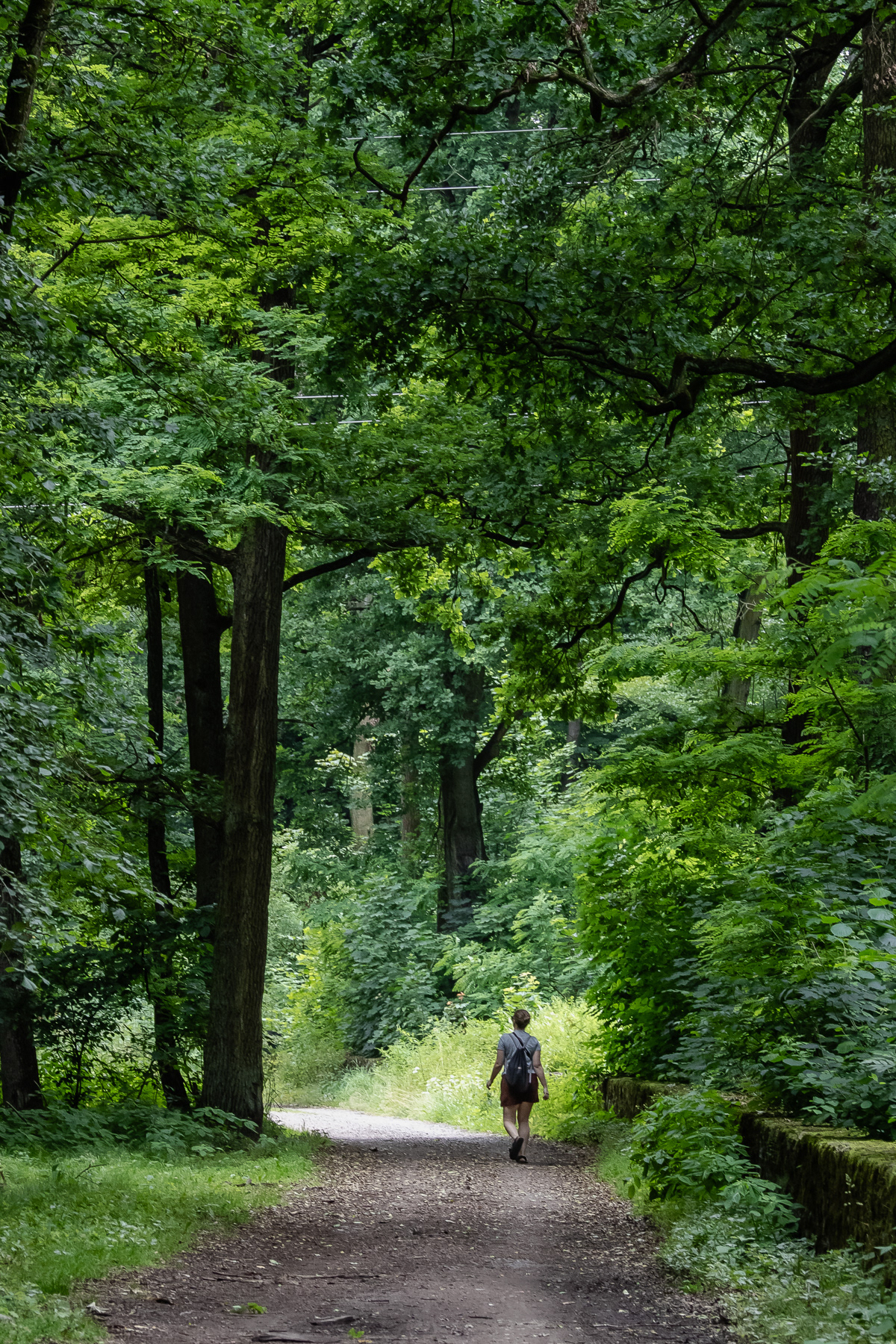
Trails to walk ...
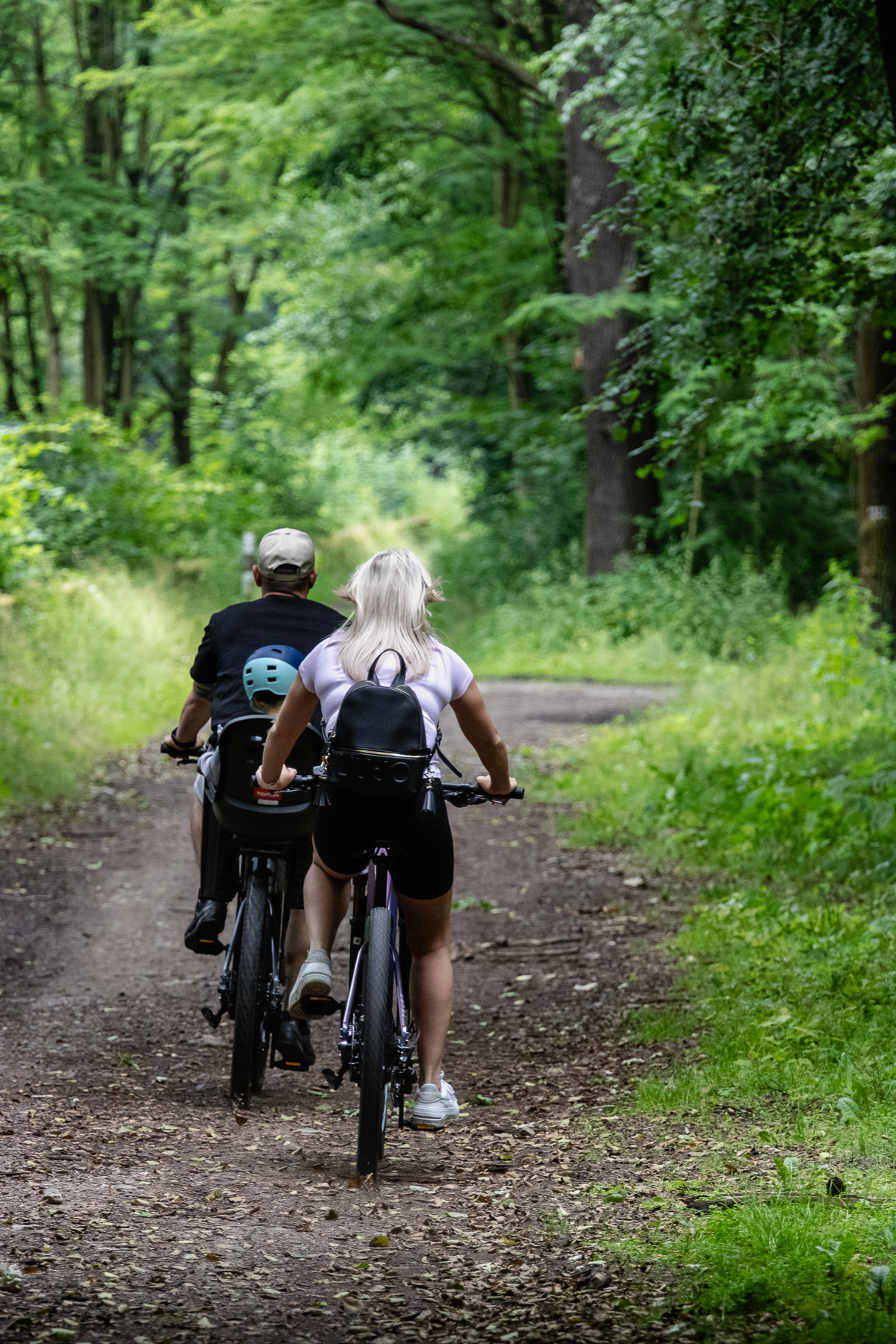
... or to cycle.
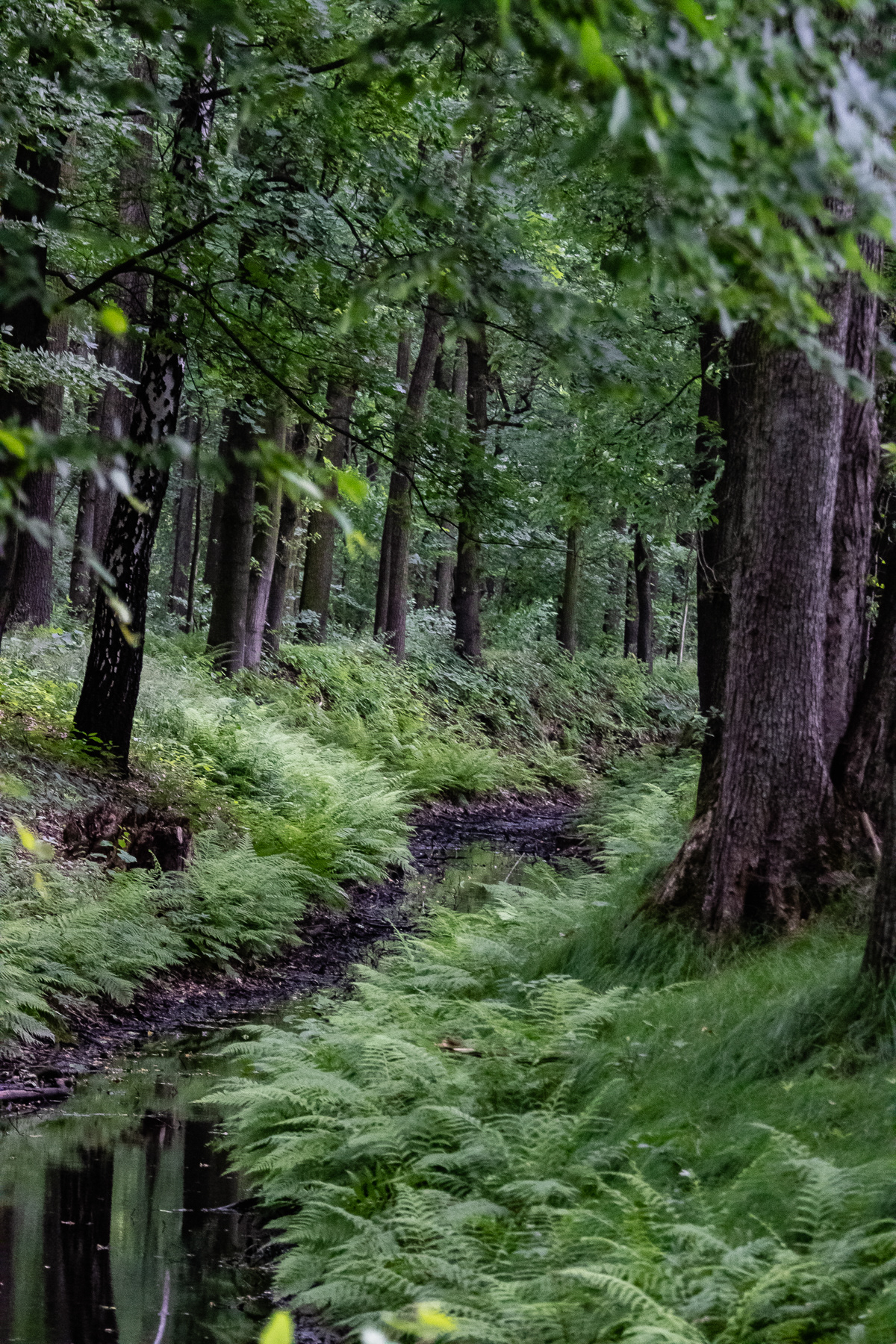
An almost dry stream.
Roe deer in the reserve.
Taken with the "long lens": the European wisent (European bison) in the reserve.
Skansen open air museum
In the mid-1970s, the Society of Friends of the Pszczyna Region (Towarzystwa Miłośników Ziemi Pszczyńskiej) established an open air museum to preserve the rural life in mainly wooden buildings in the region of the past for future generations. Taking 2 hectares about 20 minutes on foot from the Pszczyna Castle, it is a nice side-kick for those visiting the town. The buildings here date back to 1784, and the Skansen has a nice collection of historical bee hives.
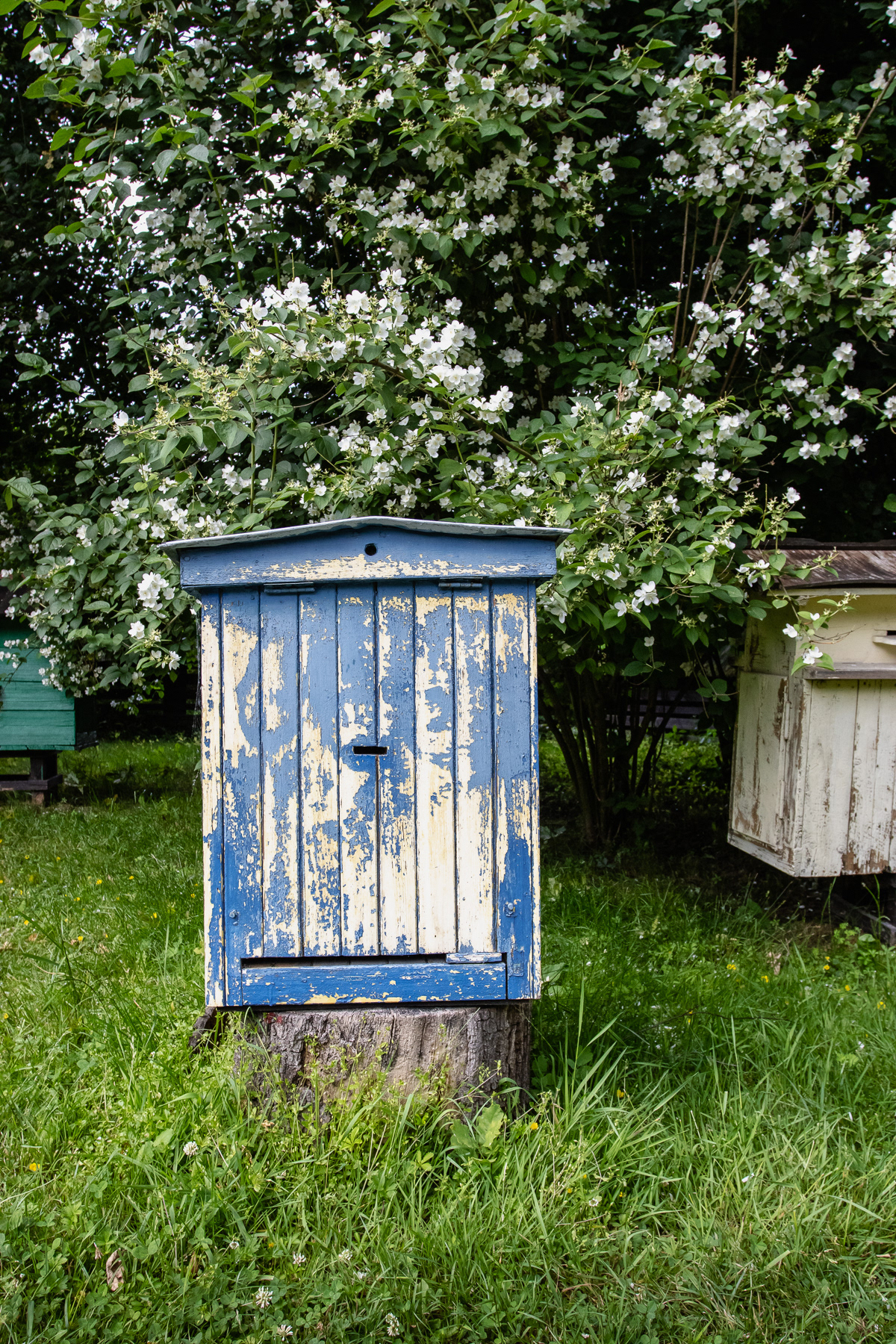

Collection of historic bee hives.

